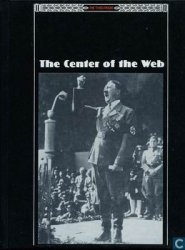Favoring liberal domestic and foreign policies and ANTICOMMUNISM, the Americans for Democratic Action (ADA) worked to bring a strong liberal approach to American government.
Founded in 1947, the Americans for Democratic Action brought together a coalition of anticommunist liberals during the COLD WAR. The organization was born out of Franklin D. Roosevelt’s fragile political coalition, the developing global conflict, and the burgeoning Civil Rights movement. The ADA, recognizing the postwar era as a time of both opportunity and danger, promoted pragmatic liberalism and anticommunism.
President Harry S. Truman presided over America’s difficult transition from ghastly war to unstable peace. The years 1946-48 were marred by industrial strikes, a housing crisis, and fears of a renewed depression. In foreign affairs, Americans perceived a communist threat at home and abroad. At times, Truman’s foreign policy appeared erratic, ranging from genial negotiation to blustery bullying, and his domestic policy was equally inconsistent. The Nation labeled the president a “weak, baffled, angry man.” For many of his fellow Democrats, Truman appeared ill-prepared to face the daunting challenges that lay ahead, a marked contrast from his savvy predecessor.
By 1948, the DEMOCRATIC Party threatened to fracture. On the left, Henry A. Wallace, the former vice president and commerce secretary, enjoyed support from progressives who favored accommodation with the SOVIET Union. Disagreeing publicly with Wallace in September 1946, Truman fired Wallace from his cabinet post. In response, Wallace formed his own rival political organization, initiated a nationwide speaking tour, and waged a presidential campaign.
On the right, conservative southern Democrats bristled over Truman’s domestic agenda, particularly its civil rights components. Many openly preferred South Carolina governor Strom Thurmond. Furthermore, after the 1946 midterm elections, Truman’s Republican opponents controlled Congress, thwarted many of his domestic policies, and eagerly awaited the 1948 presidential election.
In January 1947, in part as a response to Truman’s perceived weakness and Wallace’s high-profile defiance, 130 former New Dealers and other prominent liberals organized the ADA with the ultimate purpose of finding an alternative to Truman in the next election. Although small, the membership rolls included influential public figures such as economist John Kenneth Galbraith, historian Arthur Schlesinger, Jr., Minneapolis mayor Hubert H. Humphrey, former first lady Eleanor Roosevelt, theologian Reinhold Niebuhr, black newspaper publisher John Stengstacke, attorney Joseph Rauh, labor leader Walter Reuther, and journalists Joseph and Stewart Alsop. Later, the Hollywood chapter included Ronald Reagan, Frank Sinatra, and Bette Davis.
In domestic affairs, the ADA defended Roosevelt’s New Deal programs that provided a government-sponsored “safety net” for all Americans. Members also promoted the extension of civil rights and protection of civil liberties. In general, their domestic agenda resembled Henry Wallace’s, but whereas Wallace advocated a centralized government role and insisted on “full employment,” ADA members argued for, in Schlesinger’s words, “the necessity of political compromise” and pragmatism. They favored “doers” over “utopians” and put their faith in “the limited state.”
In foreign affairs, the ADA rejected Wallace’s accom-modationist approach toward the Soviet Union. They viewed COMMUNISM as a vital threat to world peace and American security. In particular, Niebuhr, Rauh, and Roosevelt expressed alarm over Soviet expansion in Europe and frustration over Soviet intransigence in the United Nations. Humphrey, Reuther, and the Alsops envisioned political rewards for liberals espousing anticommunism. For these reasons, ADA members embraced both internationalism and containment.
Despite holding similar political opinions, Truman never joined the ADA, and the ADA pursued DwiGHT D. Eisenhower as an alternative to Truman in 1948. Once the popular general declined to run, the ADA reluctantly supported the incumbent against New York governor THOMAS E. Dewey in the election. At the 1948 Democratic convention, Humphrey sponsored the civil rights plank that sparked the Thurmond-led DixiECRAT Party walkout. ADA members reasoned that the plank not only supported liberal ideals but also attracted a neglected constituency. Meanwhile, they resisted Henry Wallace’s PROGRESSIVE Party campaign for the presidency. Throughout the fall, Truman and the ADA marginalized the Wallace and Thurmond candidacies and stressed Truman’s anticommunist credentials. Rather than suffering defeat, Truman’s storied campaign triumphed. Together, Truman and the ADA successfully designed a political blueprint for future Democrats to follow.
In later years, the ADA repeatedly faced the troublesome dilemma of balancing its liberal ideals with its anticommunist crusade. During the 1950s Red Scare, members struggled to reconcile their fight against communism with their protection of civil liberties. While they expressed distaste for JOSEPH R. McCarthy’s anticommunist witch-hunt tactics, many members feared the political consequences of appearing “too soft” on communism. Later, as the Vietnam War intensified, the ADA membership split. Some members portrayed the war as another ideological contest with communism and appealed for escalation; others emphasized American imperialism and argued for withdrawal.
Internal divisions over Vietnam, the Great Society’s end, and the conservatives’ rise to power proved insurmountable to the small, underfunded organization. While important in its early years, the ADA’s influence waned.
Further reading: Steven M. Gillon, Politics and Vision (New York: Oxford University Press, 1987); Richard H.
Pells, The Liberal Mind in a Conservative Age (Middletown, Conn.: Wesleyan University Press, 1985).
—Andrew J. Falk




 World History
World History









